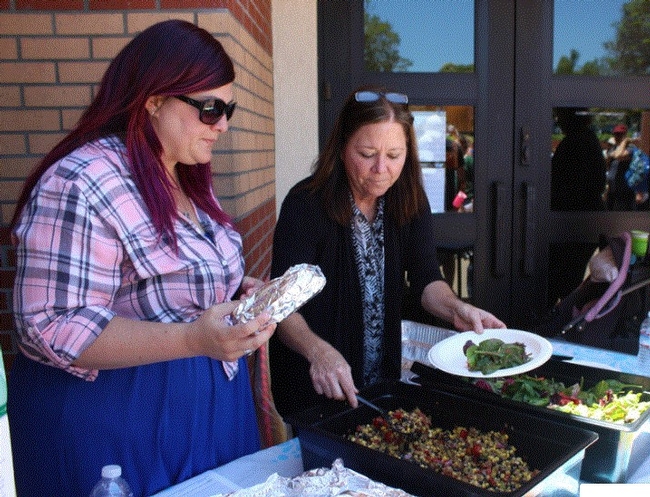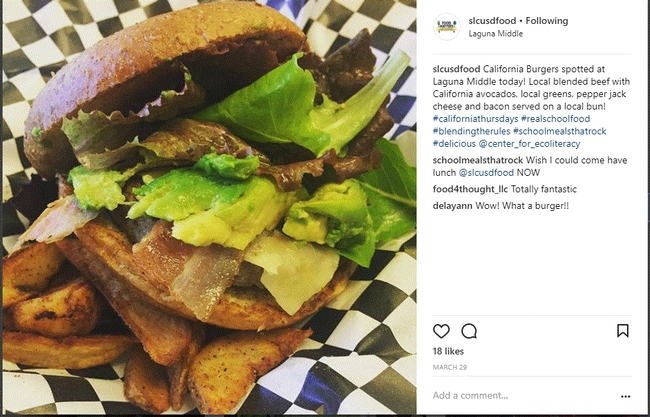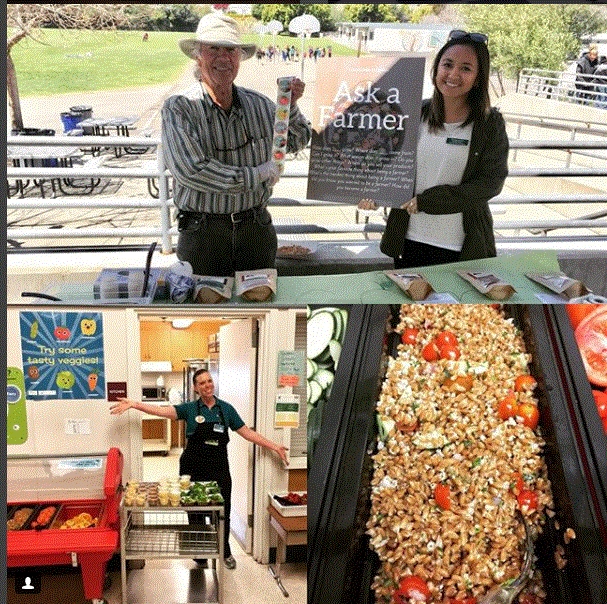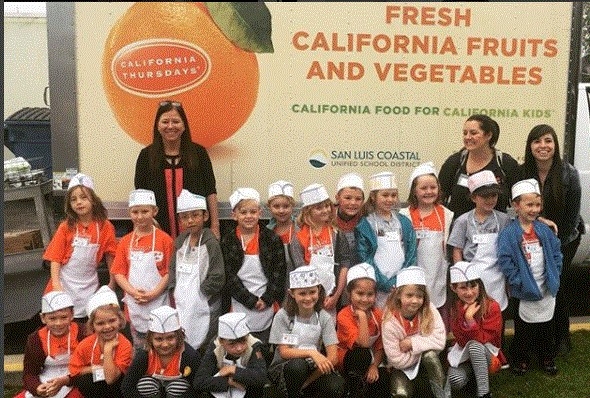School food service is a multibillion dollar industry that impacts the lives of over 30 million (mostly) low-income students. Every school day and, with increasing frequency, during summer weekdays as well, this industry provides two-thirds of students' meals (breakfast and lunch), as well as snacks, contributing a large portion of the nutrients youth consume throughout their childhoods. To qualify for a free school lunch, a family of three must make less than $26,208 in 2016-17.
School food service directors have a huge charge on their hands: feed kids, every day, with a lot of requirements, for very little money. The current reimbursement rate for free meals provided to students in California is $3.31, which is required to include at least ½ cup of fruit or vegetables, and the choice to select a whole grain food, a protein food, and low-fat or non-fat milk. Elementary school kids from higher-income homes pay around $3 for the same meals.
So, when a canned mandarin from China is more economical than a local pixie tangerine, how does this impact food service directors' decisions to make sustainable and healthy food selections?
According to the San Luis Coastal Unified food service director, Erin Primer, food service directors have a lot of power to make healthy (or not so healthy) selections. Primer is a school food champion, who some have said is “murdering the lunch lady game.” Primer's first venture into institutional food service was in the private industry and catering. She learned how to get things done, how to be competitive and, ultimately, how to serve a lot of food that people want to eat.
Primer credits this background with enabling her to see things more creatively.
“Because of my background with catering, I was never limited by what school food says we can't do," Primer said. "I never let that burden me. When I came to school food, I loved the freedom to problem solve and connect all the dots with all the requirements, and then just feeding the kids.”
How do you feed kids healthy food while considering the broader impact of food purchasing decisions? Primer says it comes down to participation, it is a game of numbers. How many students and families will choose to eat a school meal on any given day? For Primer, that's about 3,000 lunches and 2,000 breakfasts every day - a number she would like to see grow.
What are some strategies to increase participation so more kids are eating school lunch? To Primer, and many food service directors that are rising to the challenge of feeding our next generation, it's about serving good food. It is easy to get stuck in the weeds of the regulatory environment of school food; and, while following the guidelines is incredibly important, it is also important to think about the food you are serving. Primer says she likes to think about the whole plate and what actually makes sense to serve to kids. You have to keep going back to asking yourself: “Will kids eat it?” and “Does it make sense?”
“We started with asking ourselves, does it taste good? Is it good quality? Is it sending the message we want to send? And if it's not, let's not do it, Primer said.
One of the biggest changes Primer has made to her menus is first, getting rid of the junk. In the world of school food, you can find chocolate doughnuts and cinnamon-sugar cereals that meet USDA regulations for the school meal program. In many cases, food processing companies have reformulated popular food items specifically to meet requirements. By adding in whole grains, or reducing the sugar, fat or sodium content in a product, they can be sold at school even if you could never find that same version of the product in the store. When students see these products at school it can send them mixed messages about what should be included as a regular part of a healthy diet.
The next change she made and continues to make includes increasing the purchase of local foods and removing items that can't be obtained locally. She is able to serve local, grass fed beef on the menu in a “blended burger” which includes mushrooms to make it larger, tastier and economically feasible. She also became one of the first school food service directors to use local grains by featuring emmer farro from a farmer that is less than 15 miles from her office. In addition, she has made some waves by replacing bananas on her menu with other local fruits, like kiwi.
Living on the central coast of California, there is an abundance of local foods available most months of the year. However, “local” does not need to be barrier for food service directors. Defining what is “local” or “regional” is up to each district or institution, who should take into consideration the surrounding agricultural landscape, seasons, and what foods are reliably available.
The last, but really important, step that Primer is working on is telling her story. Working with partners in creative ways, Primer is working hard to sell school food to all families in her district, regardless of their incomes. Her goal is to make meals that all kids want to eat and parents want to buy. She has her delivery trucks wrapped in pictures promoting the local foods they serve each day and she talks to local stakeholders, teachers, parents and school board members at every opportunity.
What are we feeding our kids? Where did it come from? How do our purchasing decisions impact our world?
These are the questions being tackled by school and institutional food service directors every day, whether they are aware of it or not. How they choose to answer those questions will have broad reaching impacts on our communities and future generations.
Author - Area Director for UCCE in San Luis Obispo, Santa Barbara, and Ventura Counties



